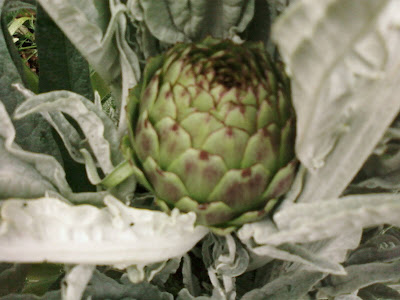 |
| Flea beetles on tomato plants |
Flea beetles are a skittish pest and are able to create a lot of damage while - on the whole - managing to get away with it scot-free. Why, well it's because of their size and speed, a flea beetle is not much more than 1 mm in length but it can jump approximately 30 cm in distance in a single bound. This being the case, as soon as you are close enough to see one, it would have already hopped off, disappearing into the undergrowth. Because of the flea beetle ability to disappear fast the culprit behind such damage is often misidentified.
Cause: Even though these tiny, fast moving insects are difficult to spot, they are perhaps the most easily recognised pest of tomato plants due to the characteristic damage that these beetles cause.
Symptoms: These beetles can cause significant damage by leaving copious amounts of small holes in the leaves. As the leaves grow, the holes become larger and end up looking as though they have been hit by a shotgun blast. This infestation is usually experienced at two distinct times of the year, usually in April and July.
Control: Flea beetles are difficult to control as they have a habit of ‘hopping’ away if disturbed, making contact insecticides a bit 'hit and miss' in their application. However, you can also consider 'trap crops' such as radish which may help lure the flea beetles away from your treasured tomatoes. So long as the radish is not in flower (as the applied insecticide will then harm beneficial pollinating insects) you may wish to use a systemic insecticide, however this will make the radish crop inedible. With this in mind, remember to label it clearly to prevent human ingestion.
Organic insecticide sprays can be used but are likely to require repeat applications. When grown under glass nicotine smokes or sulphur candles can be employed but in the UK these are no longer available to the general public
For related articles click onto the following links:
UC IPM: FLEA BEETLES ON TOMATOES
HOW TO CONTROL BLACKFLY ON TOMATO PLANTS
HOW TO CONTROL GREENHOUSE WHITEFLY ON TOMATO PLANTS
HOW TO CONTROL MOSAIC VIRUS ON TOMATOES
HOW TO KILL THE RED LILY BEETLE
HOW CAN YOU GET RID OF THE RED LILY BEETLE?
How to Grow Giant Tomatoes
Organic insecticide sprays can be used but are likely to require repeat applications. When grown under glass nicotine smokes or sulphur candles can be employed but in the UK these are no longer available to the general public
For related articles click onto the following links:
UC IPM: FLEA BEETLES ON TOMATOES
HOW TO CONTROL BLACKFLY ON TOMATO PLANTS
HOW TO CONTROL GREENHOUSE WHITEFLY ON TOMATO PLANTS
HOW TO CONTROL MOSAIC VIRUS ON TOMATOES
HOW TO KILL THE RED LILY BEETLE
HOW CAN YOU GET RID OF THE RED LILY BEETLE?
How to Grow Giant Tomatoes
.ATLAS BEETLE - Chalcosoma atlas
























